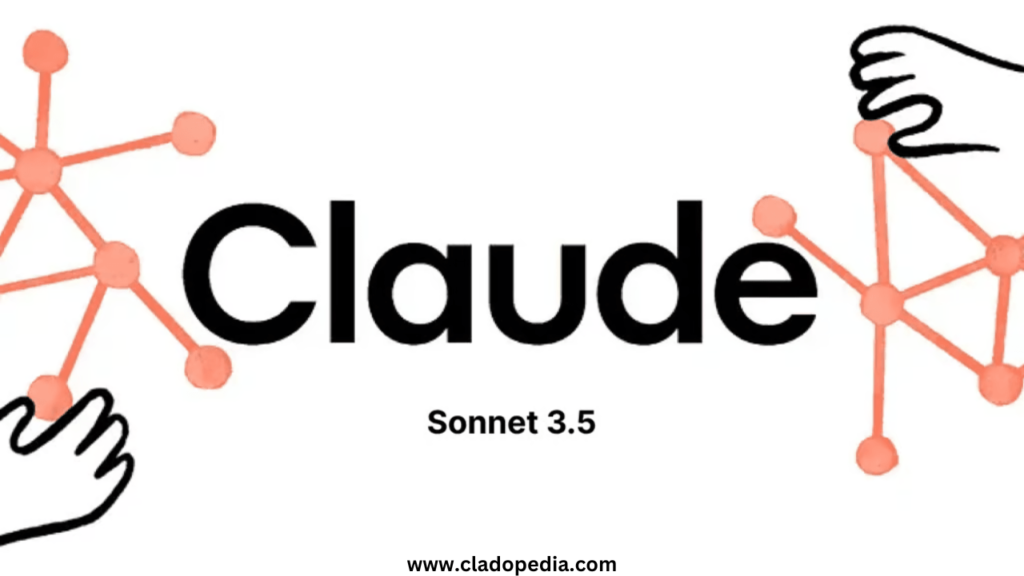Claude 3.5 Sonnet Bedrock Documentation . Claude 3.5 Sonnet, developed by Anthropic, is a next-generation natural language processing (NLP) model designed to excel in conversational AI tasks, text generation, and complex language understanding. The model’s architecture, built on cloud infrastructure, is robust, scalable, and compliant with global standards. One of the key components of Claude 3.5 Sonnet is its Bedrock architecture. This article will provide detailed documentation of Claude 3.5 Sonnet’s Bedrock system, including its deployment, architecture, best practices for implementation, and integration.
In this comprehensive guide, we will break down the various aspects of Claude 3.5 Sonnet’s Bedrock architecture and provide insights into how it functions, its role in scalability, and how developers and organizations can make the most of its capabilities.
Claude 3.5 Sonnet Bedrock
Claude 3.5 Sonnet represents a highly advanced language model capable of understanding and generating human-like text with remarkable accuracy. Bedrock in Claude 3.5 refers to the cloud infrastructure layer that supports the deployment, scaling, and operation of the model. The Bedrock system enables Claude 3.5 to run efficiently in distributed cloud environments, such as AWS Bedrock, and ensures optimal performance, security, and compliance.
This documentation focuses on the technical aspects of Claude 3.5 Sonnet’s Bedrock layer, providing developers, engineers, and IT managers with in-depth knowledge about its architecture, deployment strategies, and integration with other cloud services.
Overview of Claude 3.5 Architecture
What is Bedrock in Claude 3.5 Sonnet?
In Claude 3.5, Bedrock refers to the cloud-based foundation that supports the deployment, management, and scaling of the model. Bedrock infrastructure is essential for ensuring that the model can process large-scale queries, maintain low latency, and securely handle sensitive data. It serves as the intermediary between the model and the cloud environment, allowing developers to focus on the AI’s capabilities without worrying about underlying infrastructure challenges.
Key Components of Claude 3.5 Bedrock Architecture
- Compute Resources: Claude 3.5 relies on virtual machines (VMs), containerized applications, or serverless computing services for its core processing needs.
- Storage Systems: Data processed by Claude 3.5 is securely stored in cloud-based storage systems with backup and encryption mechanisms.
- Networking and API Gateways: Bedrock includes efficient network architectures and API gateways that manage communication between the AI model and external applications or users.
- Security and Compliance: Integrated security features, such as encryption, identity management, and region-specific data residency, are key aspects of the Claude 3.5 Bedrock layer.
Bedrock Documentation Structure
API Documentation
The Claude 3.5 Sonnet API is designed to provide developers with the tools they need to interact with the model seamlessly. API documentation includes detailed guides on:
- Endpoints: The API endpoints for requesting text generation, conversation handling, and other services.
- Authentication: Security protocols, including OAuth and API key generation for safe access.
- Rate Limits: Throttling guidelines for handling large volumes of requests.
- Error Codes: Comprehensive lists of error codes and their resolutions.
Infrastructure and Cloud Deployment
Claude 3.5 Sonnet Bedrock supports deployment across multiple cloud platforms, including AWS Bedrock, Microsoft Azure, and Google Cloud. The documentation includes:
- Guidelines for deploying the model in various regions and zones.
- Instructions for configuring virtual machines or container services.
- Network configurations for ensuring secure and efficient communication between the model and end-users.
How to Deploy Claude 3.5 Sonnet Bedrock
Prerequisites for Deployment
Before deploying Claude 3.5 Sonnet Bedrock, ensure the following prerequisites are met:
- Cloud provider account (e.g., AWS, Azure, GCP) with sufficient resource quotas.
- IAM roles and permissions set up for secure access and management of the Claude 3.5 deployment.
- API keys for interfacing with the model and related services.
- Network configurations such as VPC (Virtual Private Cloud) setup for isolating cloud resources.
Deployment Using AWS Bedrock
AWS Bedrock is the most common platform for deploying Claude 3.5. Follow these steps for deployment:
- Sign into AWS Console: Navigate to the AWS Bedrock service.
- Create a New Deployment: Use the pre-configured Claude 3.5 Sonnet template, which includes resources like EC2 instances, S3 storage, and API Gateway setups.
- Configure Resources: Define the number of instances, types (e.g., GPU-enabled for high-performance tasks), and network security groups.
- Deploy and Monitor: Once the deployment starts, monitor performance through AWS CloudWatch and make adjustments as necessary for scaling or latency issues.
Configuring Regions and Zones
During deployment, you must select the appropriate regions and availability zones to minimize latency and comply with data residency regulations. For example:
- Deploy to North America (us-east-1) for US-based users.
- Deploy to EU (eu-central-1) to comply with GDPR for European users.
- Deploy to Asia-Pacific (ap-southeast-1) for users in Southeast Asia.
Data Management in Claude 3.5 Sonnet Bedrock
Data Storage and Security
Data processed by Claude 3.5 Sonnet is stored in cloud storage systems, such as AWS S3, Azure Blob Storage, or Google Cloud Storage. Security measures include:
- End-to-end encryption: Data at rest and in transit is encrypted using industry-standard protocols (e.g., AES-256, TLS 1.2+).
- Backup and recovery mechanisms: Regular backups ensure that data is not lost in case of accidental deletion or hardware failure.
Handling Data Privacy and Compliance
Different regions have varying data privacy laws, and Claude 3.5 Bedrock ensures that data is handled according to local regulations. Key practices include:
- GDPR compliance: For European deployments, Claude 3.5 ensures that user data is stored and processed within the European Union.
- CCPA compliance: Claude 3.5 adheres to the California Consumer Privacy Act (CCPA) for data privacy when deployed in California or for California-based users.
Monitoring and Logging
Logging and monitoring are essential for tracking performance, usage, and potential security threats. AWS CloudWatch or equivalent services from other providers are used to:
- Monitor resource usage (e.g., CPU, memory, and storage utilization).
- Track API request volumes and response times.
- Alert administrators about security issues or performance bottlenecks.
Scalability and Performance in Bedrock
Load Balancing and Latency Optimization
To optimize the performance of Claude 3.5 Sonnet, load balancing across multiple regions and instances is crucial. Best practices include:
- Using elastic load balancers (ELBs) to distribute traffic evenly across instances.
- Edge computing: Deploying Claude 3.5 on edge locations closer to end-users can further reduce latency for time-sensitive applications.
Dynamic Scaling with Bedrock
Claude 3.5 Sonnet is built to scale dynamically according to demand. Auto-scaling policies can be set based on factors such as CPU load, memory usage, or request throughput. This ensures that the system remains responsive even during traffic spikes.
Redundancy and Failover Mechanisms
For high availability, Claude 3.5 Bedrock includes redundancy and failover mechanisms. These include:
- Multi-region deployments: Ensuring that if one region goes down, another region can handle the traffic.
- Backup instances: Redundant instances can be spun up automatically in case of failures in primary instances.
Best Practices for Using Claude 3.5 Bedrock
Optimizing Resource Allocation
Efficiently allocate resources by:
- Choosing the right instance types: Use GPU instances for high-demand applications and CPU instances for less resource-intensive tasks.
- Implementing cost monitoring: Keep track of cloud costs using billing dashboards, and implement budget alerts to avoid cost overruns
.
Data Residency and Regional Regulations
Deploy Claude 3.5 in regions that align with your data residency requirements. Ensure compliance with local laws, such as:
- GDPR for Europe
- CCPA for California
- PIPL for China
Security Protocols and Encryption
Follow best practices for securing Claude 3.5 deployments:
- Use multi-factor authentication (MFA) for access control.
- Encrypt all communications using TLS and ensure data at rest is protected with strong encryption algorithms like AES-256.
Common Issues and Troubleshooting in Bedrock Deployment
Debugging Bedrock Configurations
If the deployment fails or behaves unexpectedly, check the following:
- Resource quotas: Ensure your cloud account has sufficient resources (e.g., CPU, RAM, storage) available for deployment.
- Network configurations: Verify that security groups and firewall rules are correctly configured to allow necessary traffic.
Handling Latency and Connectivity Issues
Latency issues can be addressed by:
- Deploying the model closer to users in regional zones.
- Implementing edge caching strategies to store frequently accessed data at locations closer to end-users.
Resolving Deployment Errors
If you encounter deployment errors, refer to:
- Error logs: Found in the cloud provider’s dashboard (e.g., AWS CloudWatch for AWS).
- API error codes: Consult the Claude 3.5 API documentation for details on error codes and how to resolve them.
Integration with Other Cloud Services
Integrating Claude 3.5 with AWS Services
Claude 3.5 Bedrock integrates seamlessly with various AWS services, such as:
- AWS Lambda: For serverless processing.
- AWS S3: For scalable storage.
- AWS SageMaker: For training and fine-tuning machine learning models.
Claude 3.5 can also be integrated with third-party services, such as:
- Slack or Microsoft Teams: For conversational bots.
- Zapier or Integromat: For automating workflows that involve AI processing.

Conclusion
Claude 3.5 Sonnet’s Bedrock architecture provides a scalable, secure, and compliant foundation for deploying advanced AI models in the cloud. By leveraging this infrastructure, organizations can deploy Claude 3.5 Sonnet in multiple regions, ensuring optimal performance, reduced latency, and compliance with local data privacy laws. Developers can take advantage of detailed API documentation, seamless cloud integrations, and advanced scaling features to build robust AI-powered applications.
FAQs
1. What is Claude 3.5 Sonnet Bedrock?
Claude 3.5 Sonnet Bedrock is the cloud infrastructure layer that supports the deployment and scaling of the AI model across multiple regions and cloud platforms.
2. How do I deploy Claude 3.5 Sonnet on AWS Bedrock?
Deploying on AWS Bedrock involves setting up resources such as EC2 instances, configuring security groups, and selecting regions to minimize latency and ensure data privacy compliance.
3. How does Claude 3.5 handle data privacy in Bedrock?
Claude 3.5 adheres to regional data privacy laws, such as GDPR, by ensuring that user data is stored and processed within the appropriate geographic locations.
4. What are the best practices for scaling Claude 3.5 Sonnet?
Use auto-scaling policies, deploy in multiple regions for redundancy, and implement load balancing to distribute traffic and maintain performance during peak times.
5. How can I troubleshoot issues with Claude 3.5 Bedrock?
Common issues can be resolved by reviewing error logs, ensuring resource quotas are met, and checking network configurations for correct traffic routing.
